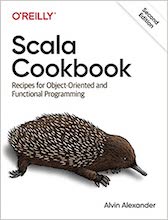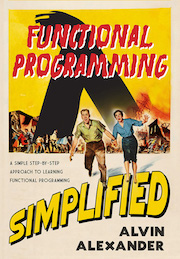Java example source code file (MXBeanLookup.java)
The MXBeanLookup.java Java example source code
/*
* Copyright (c) 2005, 2008, Oracle and/or its affiliates. All rights reserved.
* DO NOT ALTER OR REMOVE COPYRIGHT NOTICES OR THIS FILE HEADER.
*
* This code is free software; you can redistribute it and/or modify it
* under the terms of the GNU General Public License version 2 only, as
* published by the Free Software Foundation. Oracle designates this
* particular file as subject to the "Classpath" exception as provided
* by Oracle in the LICENSE file that accompanied this code.
*
* This code is distributed in the hope that it will be useful, but WITHOUT
* ANY WARRANTY; without even the implied warranty of MERCHANTABILITY or
* FITNESS FOR A PARTICULAR PURPOSE. See the GNU General Public License
* version 2 for more details (a copy is included in the LICENSE file that
* accompanied this code).
*
* You should have received a copy of the GNU General Public License version
* 2 along with this work; if not, write to the Free Software Foundation,
* Inc., 51 Franklin St, Fifth Floor, Boston, MA 02110-1301 USA.
*
* Please contact Oracle, 500 Oracle Parkway, Redwood Shores, CA 94065 USA
* or visit www.oracle.com if you need additional information or have any
* questions.
*/
package com.sun.jmx.mbeanserver;
import static com.sun.jmx.mbeanserver.Util.*;
import java.util.Map;
import java.lang.ref.WeakReference;
import java.lang.reflect.InvocationHandler;
import java.lang.reflect.Proxy;
import java.security.AccessController;
import javax.management.InstanceAlreadyExistsException;
import javax.management.JMX;
import javax.management.MBeanServerConnection;
import javax.management.MBeanServerInvocationHandler;
import javax.management.ObjectName;
import javax.management.openmbean.OpenDataException;
/**
* @since 1.6
*/
/*
* This class handles the mapping between MXBean references and
* ObjectNames. Consider an MXBean interface like this:
*
* public interface ModuleMXBean {
* ProductMXBean getProduct();
* void setProduct(ProductMXBean product);
* }
*
* This defines an attribute called "Product" whose originalType will
* be ProductMXBean and whose openType will be ObjectName. The
* mapping happens as follows.
*
* When the MXBean's getProduct method is called, it is supposed to
* return a reference to another MXBean, or a proxy for another
* MXBean. The MXBean layer has to convert this into an ObjectName.
* If it's a reference to another MXBean, it needs to be able to look
* up the name under which that MXBean has been registered in this
* MBeanServer; this is the purpose of the mxbeanToObjectName map. If
* it's a proxy, it can check that the MBeanServer matches and if so
* extract the ObjectName from the proxy.
*
* When the setProduct method is called on a proxy for this MXBean,
* the argument can be either an MXBean reference (only really logical
* if the proxy has a local MBeanServer) or another proxy. So the
* mapping logic is the same as for getProduct on the MXBean.
*
* When the MXBean's setProduct method is called, it needs to convert
* the ObjectName into an object implementing the ProductMXBean
* interface. We could have a lookup table that reverses
* mxbeanToObjectName, but this could violate the general JMX property
* that you cannot obtain a reference to an MBean object. So we
* always use a proxy for this. However we do have an
* objectNameToProxy map that allows us to reuse proxy instances.
*
* When the getProduct method is called on a proxy for this MXBean, it
* must convert the returned ObjectName into an instance of
* ProductMXBean. Again it can do this by making a proxy.
*
* From the above, it is clear that the logic for getX on an MXBean is
* the same as for setX on a proxy, and vice versa.
*/
public class MXBeanLookup {
private MXBeanLookup(MBeanServerConnection mbsc) {
this.mbsc = mbsc;
}
static MXBeanLookup lookupFor(MBeanServerConnection mbsc) {
synchronized (mbscToLookup) {
WeakReference<MXBeanLookup> weakLookup = mbscToLookup.get(mbsc);
MXBeanLookup lookup = (weakLookup == null) ? null : weakLookup.get();
if (lookup == null) {
lookup = new MXBeanLookup(mbsc);
mbscToLookup.put(mbsc, new WeakReference<MXBeanLookup>(lookup));
}
return lookup;
}
}
synchronized <T> T objectNameToMXBean(ObjectName name, Class
Other Java examples (source code examples)Here is a short list of links related to this Java MXBeanLookup.java source code file: |
 The search page
The search page Other Java source code examples at this package level
Other Java source code examples at this package level Click here to learn more about this project
Click here to learn more about this project
